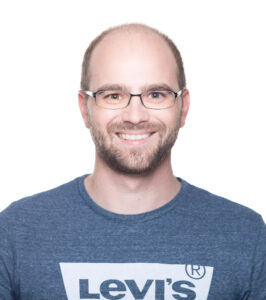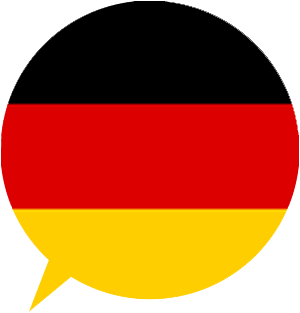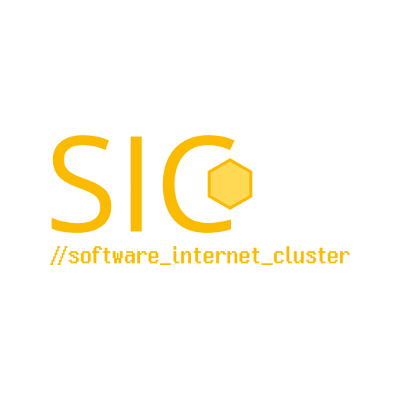Within the SIC, it is particularly important to us to advance and promote the exchange of knowledge among our members in order to constantly develop the regional IT industry and pass on helpful knowledge. Therefore, we conducted insightful interviews with our members on how to deal with current challenges in the IT industry.

Thomas Grassauer, Development Lab Lead of Dynatrace Austria Lab in Klagenfurt
Dynatrace was founded in Linz in 2005 and is the world market leader in software intelligence. The technological and creative heart of Dynatrace’s software development beats in Europe: Linz is the company’s global engineering headquarter with software development locations in Hagenberg, Graz, Klagenfurt, Vienna, Innsbruck, Barcelona, Gdansk, Tallinn and Detroit. Dynatrace has been represented in Klagenfurt’s Lakeside Park since 2017. The location is managed by Thomas Grassauer. In total, more than 3,000 people work at Dynatrace worldwide, around 1,000 of them in the fields of engineering, research and software development.
Dynatrace’s mission: Software must work perfectly all over the world. On the way to the autonomous, self-healing and self-protecting cloud, Dynatrace supports the largest companies in the world with its all-in-one software intelligence platform with automated, AI-powered full-stack coverage. The digital user experience is improved and new business models can be implemented more quickly. In the age of digitization, millions of people benefit from it every day: in banking, when travelling, when shopping, when working remotely or in the healthcare sector.
“We are colorful and diverse, that’s a good thing and there can definitely be more!”
How are you dealing with the current shortage of skilled workers?
Good specialists are hotly contested, but we still manage to grow by around 30% annually. The recipe for success sounds simple, and yet it is incredibly important: we focus on people and are 100% authentic. At Dynatrace there is a culture of autonomy and self-determination. Our employees are supported in their individual development. Employee Experience is not a buzzword, but is lived top-down through all our company levels.
In order to create our growth, the principle “think globally, act locally” also applies. Around 25% of international experts work at Dynatrace in Austria, and we give them intensive support when moving. We are colorful and diverse, that’s a good thing and there can definitely be more. Even within Austria, it is not absolutely necessary to start at the local location. Our broad network of labs in Austria brings teams from all federal states closer together.
What does your implementation look like?
An environment must be created in which employees would like to work. This starts with offices where people can meet and withdraw and also includes comprehensive health and sports offers. Employees who come to work by bike or by feet are supported, for example, with vouchers for local shops. This is good for personal health and the environment.
Furthermore, it is important to offer exciting and flexible tasks in different areas and roles, as young talents also want to pursue these in the long term. For example, you can offer the possibility of an internal change of department in order to support personal development. It is also important to address different target groups. Key word – lack of female applicants. How do I address long-standing experts as well as young professionals? How can we address and promote young talent? No limits for creativity!
How do you manage to address non-technical people as new employees?
When we think of lab operations, employer branding or HR-related activities, it is nevertheless the case that applicants are mostly addressed who already had first contact with similar business fields. Our culture is attractive to everyone, and a company that is growing at this speed, with a global impact like ours, is hard to find a second time. The message for technicians and non-technicians overlaps. Regardless of different positions in the company, the corporate culture to be transported should also be lived!
Attractive company despite fewer resources?
Regardless of the size of the company, you have the opportunity to score points in the areas of communication and culture. The goal should be to maintain transparent communication and to clearly communicate the company’s mission and vision. This can be realized in both large and small companies. As a smaller company, the elimination of hierarchical levels even gives you a certain advantage in terms of offering more flexibility, e.g. in the organization of working hours. Regardless of the setting, it is important to “take employees along” through creativity and ingenuity in order to inspire them for the company in the long term.
Which home office policy do you follow in your company?
In particular, offering flexible working hours was already common practice and independent of the way in which a company was set up. However, the mix caused by the pandemic was also a situation for us that was not so visible before. The pandemic was a kind of catalyst. We now use a hybrid approach when our teams work together. We learned a lot here. This can be seen above all in the design of our office areas, which can now be used more flexibly. At the moment, our employees are free to work in the office or from home. Many of our employees choose a mix with e.g. 4 days in home office and one day in the office, then 3 days in the office etc.
How do you implement your home office policy?
If you spend most of the week in the office, you are assigned a fixed place, otherwise there are booking systems that support us in allocating a workplace in the office. We would like to continue this trend in the future. It is important to have clear communication and to involve all those affected in the decision-making process in order to ensure the best possible flexibility without loss of productivity.
Classic core working hours or meetings should also be clearly defined. Employees within the team also need to know who is when available, and a time slot can be booked, regardless of whether they are working from home or in the office. For communication, we rely on tools such as MS Teams or Zoom, which have been proven extremely effective for collaboration within our teams.
What about the onboarding of new employees?
The first step is to provide new employees with the necessary hardware (for remote and home office). Our onboarding process is based on a mentoring program. An experienced employee is assigned to the newcomer before they join the company and supports them in entering the company, offering orientation and technical assistance, both on site and in the home office. The mentoring program also has priority for a place in the office to create the opportunity for personal exchange.
The creation of contact points within the company with meet’n greets in the team, coffee meetings or stand-ups outdoors are also part of our onboarding process. It’s about finding creative solutions. A structured onboarding definitely requires good planning. All sessions are already entered in the employee’s calendar on the first day – so you are oriented and organized right from the start!
Where do you see the future of Austria’s IT industry?
In Carinthia we have many innovative and successful companies of different sizes. We have great job offers for skilled workers and an outstanding work-life balance, combined with attractive technical training opportunities in schools and universities. We see the challenge for Austria in the innovative start-up area. In 2021 there were successful and large investments in young companies, but most of these came from external investors. So we have good ideas and an extremely attractive location in Austria – here we have to rethink and become more active in our own market.
In the last two years, we have all become more aware of how important the digitization is. We see the need for digital services or connection to digital systems in ALL industries. As a retailer, for example, it is hardly possible to work without a website or an online shop. We see a great opportunity for the IT industry here. There is also a stronger trend towards automation – here it is important to promote innovations and rethink, e.g. in production, accounting or sales. This increasing need for digital services is also reflected in the current shortage of skilled workers. Entrepreneurs are more in demand than ever to create enthusiasm and motivation among young audiences – here we have to leave a positive footprint together!
If you were minister responsible for digitization, what would you change?
A very exciting question, especially for non-politicians. In any case, it must be clear that we already have great ideas and successful companies in Austria and therefore also the opportunity to draw on a broad range of expertise in our country. The best ideas come from a team. So what expertise do I need to identify current pain points and then tackle them step by step. However, it is not about rushing into big bang changes, as these are rather difficult and time-consuming to manage. In the area of software development in particular, there is a strong drive towards agile methods in order to be able to react more quickly to situations.
It takes more courage to try new things and to think less in terms of colossal project or budget sizes. This mindset could also be applied to digitization projects in order to establish a gradual change in digitization in Austria in the long term. Without the necessary know-how and the gradual change, it will be difficult to deviate from the status quo.
We would like to thank you for the exciting insights and the insightful interview Thomas Grassauer, Development Lab Lead of Dynatrace Austria Lab in Klagenfurt!
You would like to share your experiences on current challenges with us?




